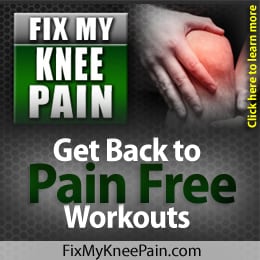What Causes a Meniscus Tear?
Let’s continue on with another article on meniscus tears. With this article, I will focus on:
- how the menisci work
- what increases your risk of a meniscus tear
- what causes a meniscus tear
Biomechanics of the Menisci
It has been strongly established that the major function of the menisci within the knee are to transmit the joint force from the thigh bone to the shin bone and to maintain joint stability.
During normal activities, such as walking and climbing the stairs, the knee joint sustains loads that are between 2.7 and 4.9 times the body weight (Anasthasiou & Sanchez-Adams, 2009). Research revealed that a healthy meniscus has the ability to bear between 45 and 75% of the total knee joint load.
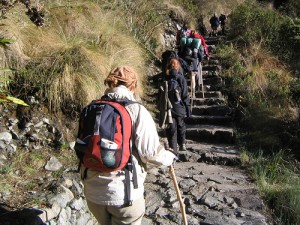
As the knee bears weight, the knee joint endures axial compression, a condition where the body weight falls centrally. Without a meniscus, the body weight would be unevenly distributed to the thigh bone and shin bone.
This abnormal condition would consequently lead to excessive force on certain areas of the bones compromising the knee joint, causing early degeneration or arthritis.
The menisci go along with the motion of the round prominences of the femur during bending or straightening of the knee. As the knee straightens, the menisci move anteroposteriorly, or from front to back. As the knee bends, the thigh bone rotates away from the center of the body and the medial meniscus is pulled forward. As the knee moves into bending position, the maximal contact area is achieved between the femur and menisci (Bhagia, 2012).
The report of Anasthasiou and Sanchez also revealed the following information:
- As the knee bends, the contact area between the joints of the knee bones is increased by 4% for every 30-degrees of flexion.
- In standing position with the knee completely straight, the lateral meniscus bears almost all (70%) of the weight on the lateral side. In the same position, the medial meniscus only bears 50% of the weight applied on the medial side.
- The meniscus creates about 1 millimeter of space between surfaces of the thigh bone and the shin bone. This gap allows only 10% of contact between these surfaces.
- In the absence of a meniscus, the support provided by the round prominences of the femur is significantly decreased, leading to concentrated joint force on the cartilages covering the bones. This condition increases the stress applied to the cartilage three times higher than the usual.
- The menisci are wedge-shaped for an important reason. They are inherently thicker on the periphery of the joint and thinner on the middle to stabilize the head of the femur as it connects to the tibial plateau. This increases the conformity of the two surfaces. Their shape contributes to joint stability.
Epidemiology and Risk Factors of Meniscus Tears
Frequency of Meniscus Tears
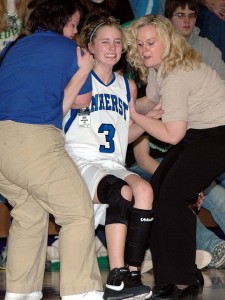 Meniscal injuries are a common injury among adults, especially those involved with contact sports. Despite its common occurrence, the exact incidence and prevalence of meniscal injury is not completely known. A report by Baker in 2011 estimated that the prevalence of acute meniscal tears may reach up to 61 cases per 100,000 individuals in the United Sates. It was also approximated that 850,000 patients in the U.S. undergo surgical procedures that involve the meniscus each year.
Meniscal injuries are a common injury among adults, especially those involved with contact sports. Despite its common occurrence, the exact incidence and prevalence of meniscal injury is not completely known. A report by Baker in 2011 estimated that the prevalence of acute meniscal tears may reach up to 61 cases per 100,000 individuals in the United Sates. It was also approximated that 850,000 patients in the U.S. undergo surgical procedures that involve the meniscus each year.
Risk Factor for a Meniscus Tear: Age
The highest incidence of meniscus tears occurrence occurs between 31 and 40 years in men. For women, the peak incidence of meniscal injury occurs earlier in life, which is reported between 11 and 20 years.
In individuals older than 65 years, the rate of meniscal injuries occurring due to wear and tear is about 60%.
A meniscus injury may occur at any age. It was found that this type of knee injury may also occur in individuals who have not fully reached skeletal maturity.
Risk Factors for a Meniscus Tear: Sex
Meniscal injuries are more common in males with a general male-to-female incidence of 2.5:1. Its higher incidence among the male population may be attributed to males being more engaged in contact or aggressive sports and every day activities.
Risk Factors for a Meniscus Tear – Race
There is no known association between race or ethnicity and meniscal injuries.
Causes of Meniscus Tears
Meniscal tears and injuries commonly occur due to an abrupt twisting or turning movement, often while the involved foot is in contact with the ground and the knee is bent.
The menisci are typically damaged by rotational force, which are more likely to occur with sport-related activities (Bhagia, 2012). Although athletes of almost every sport can suffer from a meniscus injury, those involved with contact sports, such as skiing, football, and rugby are particularly at risk to sustain this type of injury.
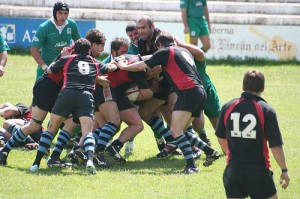
The classic mechanism of a meniscal injury is a varus (outward) or a valgus (inward) force applied to a bent knee.
The injury is usually sustained when lifting a heavy load or playing contact sports. When the involved foot is on the ground and the thigh bone is moving toward the center of the body, an inward force applied to a bent knee may tear the medial meniscus.
An outward force applied to a knee in bent position with the thigh bone moving away from the center of the body is more likely to cause tearing of the lateral meniscus. Any of these movements leads to a shear force on the meniscus, causing a tear.
A meniscus injury is commonly caused by trauma, but it may also result from every day or non-stressful activities like squatting or jogging (Bedi, 2009). It is for this reason that meniscal injuries are not exclusively sustained by athletes.
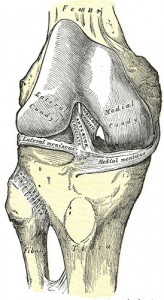 According to research, the incidence of medial meniscus injury is higher than the incidence of lateral meniscus injury (Bhagia, 2012). The lateral meniscus is more mobile than the medial meniscus. Being more securely attached, the medial meniscus has lesser capability in adapting to forces applied to the flexed and weight-bearing knee.
According to research, the incidence of medial meniscus injury is higher than the incidence of lateral meniscus injury (Bhagia, 2012). The lateral meniscus is more mobile than the medial meniscus. Being more securely attached, the medial meniscus has lesser capability in adapting to forces applied to the flexed and weight-bearing knee.
Meniscus injuries commonly occur in association with other knee injuries. The two most frequent of these are tears involving the anterior cruciate ligament and the medial collateral ligament. The occurrence of these knee injuries at the same is known as the unhappy triad. Athletes who play football are at risk to develop these three injuries simultaneously. Unhappy triad occurs when an individual is hit on the outside or lateral part of the knee.
If you would like more information on the meniscus tear program that I use with my clients, CLICK HERE
Rick Kaselj, MS
If you liked the above, you might find these posts helpful:
- What To Do About Meniscal Injuries?
- Terminal Knee Flexion for Knee Injury Recovery
- Avoiding Common Terminal Knee Extension Exercise Mistakes
.


